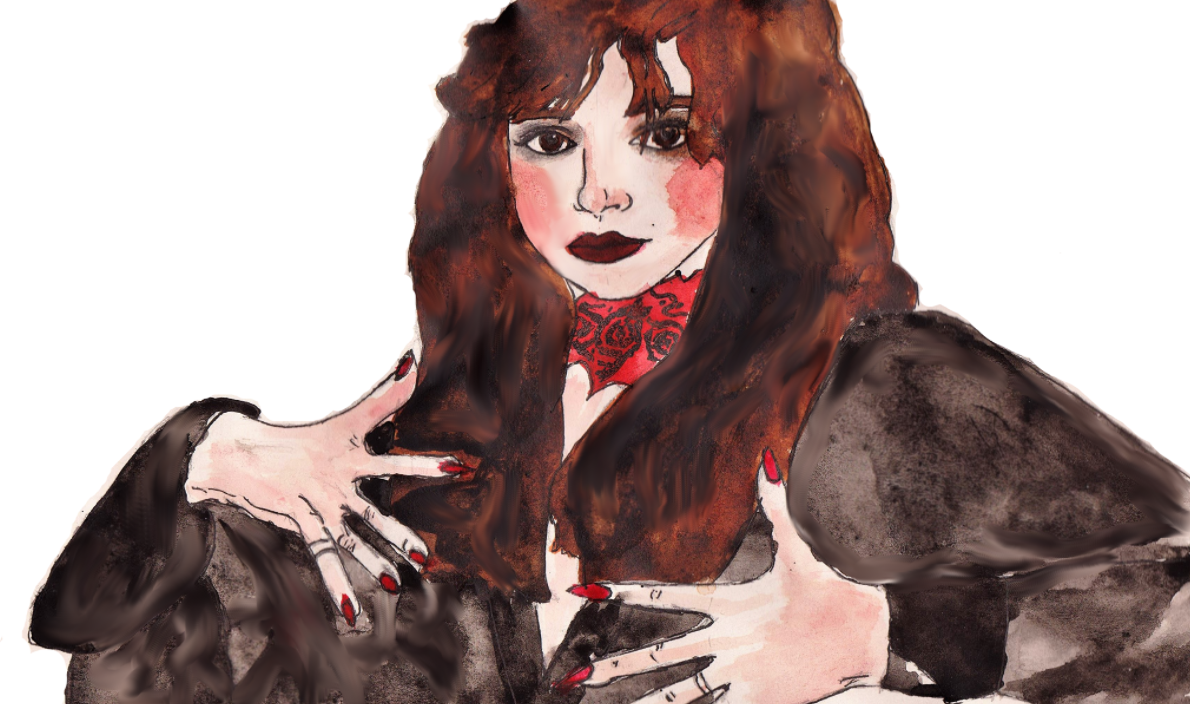Nobody ever perfected the feminine as ethereal quite like Kate Bush. An influence on innumerable modern pop stars and style icons – Florence + the Machine, Bat for Lashes, Bjork and St Vincent, to name but a few, Bush is an icon of music, style, and feminism all at once. Incorporating costume wholeheartedly into her music videos and performances, she used her attire as an equal arm of her unbounded creativity as any other artistic medium. Her iconic, enormous wavy brown hair and angelic Wuthering Heights white dress cemented her place in pop culture iconography, and informed my relationship to femininity and performance more than any other artist.
Bush’s tribute to Emily Bronte’s classic novel continues to be both her most iconic song and music video; the sweeping, ethereal interpretive dance moves, the wild facial expressions, the translucent red or white chiffon dress with enormous, billowing sleeves that have informed my – and many others – taste in neo-Victorian romanticism. Everything Florence Welch does now can be taken from that performance; the otherworldly, ghostly femininity, the floaty, sheer fabrics, the powerful, modern witchiness. It’s a performance that rivals the intensity of Bronte’s extraordinary novel itself. Her beauty choices of the 80s, too, trickle down to designers the world over; the heavy fringe and thick, dark hair, deep berry lipstick and intense smoky eyes have informed many recent catwalks in their witchy, gothic-romantic revivals, which have in turn been responsible for countless glamorous night-out looks on the high street, all black lace and sheer panels.
At a time when fashion tended overwhelmingly towards the forward-looking, the shiny, futuristic fabrics, the business-influenced party power-dressing, the big skirts and sleeves and hair and a vision of the future from the 50s, Bush took a softer, more nostalgic, more quietly theatrical view; borrowing from Pre-Raphaelite painting, Japanese art history and textiles, and the culture of mine and contemporary dance from which she rose, Bush’s look – like her sound – operated in its own imaginative sphere. Her countless bodysuits and leotards spoke of a practical, dance school mentality; the idea of wearing the easiest outfits to perform in, to allow for movement, to dance and fly and fully express yourself, can be seen in the classic bodysuits and worshipping of good basics of the recently-passed American Apparel. Bush approached fashion from an artist’s sensibility and with the eye of a costume designer; her commitment was, first and foremost, to character, to performance and to creative freedom.
For me, Bush’s style was crucial to the formation of my emerging teenage femininity. With a penchant for both the theatrical and the gothic, I moved out of my early teens emo phase – grew beyond enormous black band hoodies and colour striped socks in search of something more subtle, that still worked with my intense love of black eyeliner. Bush offered a take on the gothic heroine that was joyous, all about exclamation, high emotional states and love of nature. She was powerful, magical, reclaiming the fainting gothic heroine and putting her centre stage; she was unapologetically eccentric, taking influence from innumerable, seemingly disparate sources, she made incredible music and gave no cares if anyone thought she was weird or mad, she was the coolest, funkiest earth mother, the best kind of witch. Every modern popstar owes something to Kate Bush; countless catwalks are in debt to her eye to the stage; I owe her to this day for my ideas of what femininity can be.
Article and illustration by: Clare Patterson


[…] This article originally appeared in Glasgow University Magazine in 2017 […]